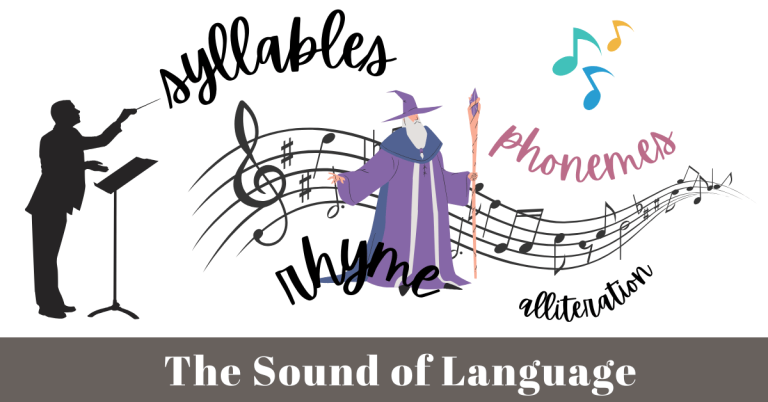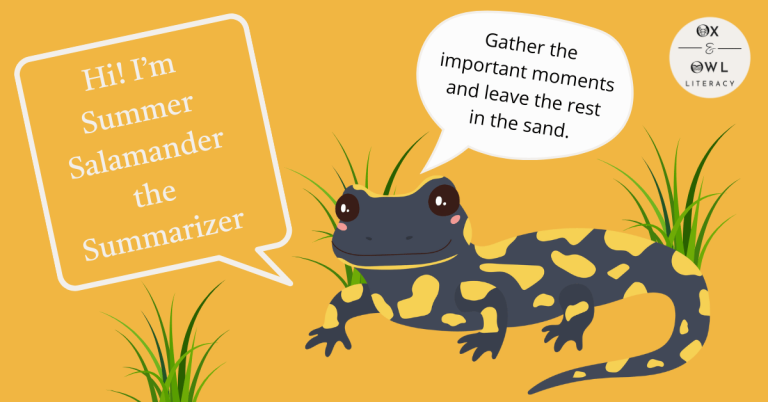Print Awareness: How We Come To Understand Print As Meaningful
Print awareness is an important foundational skill in learning to read and typically develops in young children through exposure to print in their environment, such as signs, books, labels, and through engagement in a variety of literacy activities.

Ox & Owl Questions to Ponder
Have you ever stopped to consider how often you rely on print each day—and how children begin noticing this long before they can read?
Why is it important for children to learn not just what print says, but how print is organized?
What exactly does it mean for a child to have “print awareness”?
How can we provide prompting questions during everyday tasks that help build children’s print awareness?
It’s a simple fact, we interpret print every day. It is all around us, touching our lives in both mundane and routine ways, and also in interesting and profound ways. From a simple note to a well-written book affecting us to our core.
Children who cannot yet read, come to understand a stop sign means stop, signs on a shop door or window say if the store is open or closed, stories are made alive by words read on pages in a book, and names on cards determine who gets given the card.
These associations carve an understanding of how combinations of letters form words and hold meaning; that they supply information, drive actions, and are a means of communication. This understanding is called print awareness and it lays a very important foundation for other literacy skills and helps to build children’s interest in printed words, books, and with learning to read.
For children to be able to develop literacy skills involving reading, spelling, and writing, they first need to have print awareness.
What are Examples of Print Awareness In Action?
The following is a collection of examples of simple, yet important skills that make up what we term print awareness for the English language.
Turning pages in a book from right to left and starting a book from the front cover
Noticing different fonts or sizes of text, and realizing they can signal importance (e.g., “That word is really big!”)
Reading words from top to bottom and from left to right
Pointing to the title of a book and recognizing it as important
Matching some of the capital letters with lower case letters
Holding a book right-side up, with letters facing a certain direction
Understanding when a book is upside down and being able to correct the orientation of the book to right-side up
Pointing to a letter and asking what the letter name or sound is
Identifying some letter names –may not know all the letters
Asking what a character is saying when seeing words in a speech bubble
Using print or writing in pretend play – for example, when pretending to be a doctor, asking others (their patients) to fill out a form
Singing the beginning or full alphabet song when you mention the word ‘alphabet’ or string some letters together
Flipping through a book, pretending to read by making up words or stories — showing they understand print is connected to storytelling
Distinguishing between letters and words, and understanding how words can have varying amounts of letters
Knowing that different kinds of print have different purposes — like books tell stories, signs give information, and menus list food
Understanding that print stays the same every time you read it, unlike spoken language that can change
Attempting to write – even if children can’t form letters yet (scribbling lines or letter-like shapes across a page and “reading” it aloud)
Pointing to printed words or text and asking what it says
Understanding there are letters A-Z, though they may miss many or say many of them out of order
Recognizing familiar environmental print (e.g., stop signs, food labels, store logos)
NOTE: Many of these examples are specific to the English language and related languages. Keep in mind in some other countries and languages, book orientation and the direction of reading can be different, such as reading right to left and turning pages of a book from left to right (starting with what would be considered the back of an English book).
When Do Children Develop Print Awareness?
Print awareness starts to develop in children in infancy, as they are exposed to language and watch others demonstrate the important role print has in their lives as a way of gaining and recording information, communicating with others, and commanding the actions we choose to take.
Children continue to build their print awareness through early childhood. They experience rapid development of print awareness during the ages 3-5 with exposure to books, oral language development, cognitive and physical development, and engagement with early literacy games and activities.

Examples of Questions and Statements to Build Your Child’s Print Awareness Skills:
Helping your little one develop print awareness can be done through natural everyday life activities you do together. All it takes is being a little intentional with scripting some of your own word awareness, modeling, and sharing them with your child so he/she can make connections between spoken language and written language. Here are some examples to get you started:

Example 2: “Hmmm, I wonder who drew all these pictures in the book. Let’s find the illustrator’s name to find out.”
Example 3: “Let’s look at the back of the book together… look it tells me what the story will be about (or look, here is a picture of the author?”
Example 4: “I wonder how many words this long word has. Rhinoceros… let’s count the letters together, 1…2…3…to 10! The word rhinoceros has 10 letters.”
Example 5: “This book is called Clara Caterpillar. This caterpillar has the same first letter in her name as your name! Clara starts with C and Callie starts with C, and they both make the same /k/ sound, just like in kite, cat, and kangaroo.”
Example 6: “Hmmm, where does this story begin… on this page or over on this page? Can you find the first word for me?”
Example 7: “Who is this package for? Let’s see whose name is on the label/tag… point to the name. Whose name do you think this might be? This name starts with a letter __ , the letter ___ makes a _______ sound, whose name starts with a ________ sound”
Example 8: “Look here, there is a poster with a puppy dog. I see numbers here… 3 numbers…3 more numbers… and 4 numbers … this is a telephone number. Why do you suppose this person put a picture of a dog and wrote their phone number on this poster? …Let’s see what it says.”
By providing opportunities for children to engage with print in meaningful ways and asking prompting questions, you can support your child or student’s print awareness and set them on a path to becoming motivated and successful readers.
Key OOliteracy Takeaways
Nurturing Little Minds, Sparking Big Dreams

I’m happy you’re here!
Hi, I’m Julie, the passionate creator of Ox & Owl Literacy. I enjoy empowering families and educators with wonderful resources to inspire fun, imaginative, and joyful learning opportunities for young kiddos. You’ll find lots of recommended books, reading resources, and creative learning activities on this site aiming to help children fall in love with language, books, reading, and the transformational power of stories.









